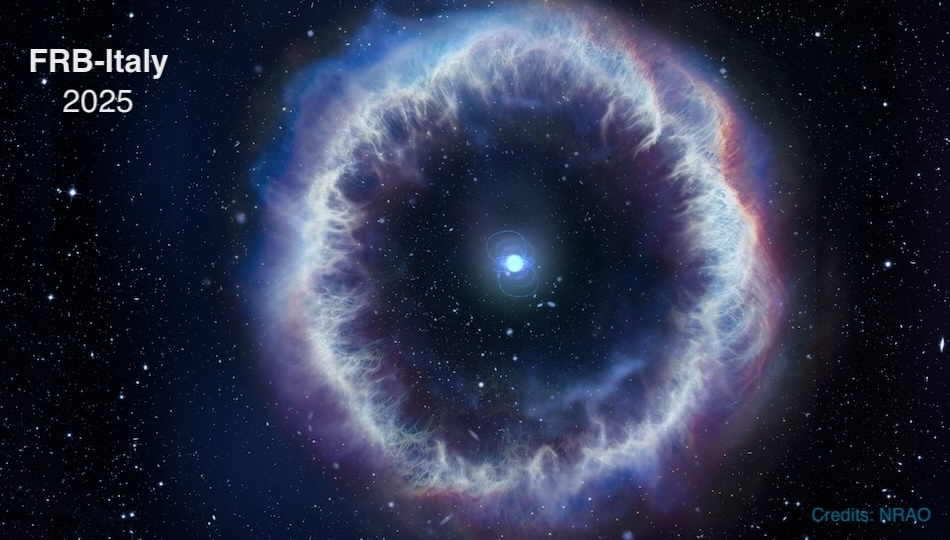The physical origin of Fast Radio Bursts (FRBs) is still unknown. Many models consider magnetars as possible FRB sources, supported by the observational association of FRBs with the galactic magnetar SGR 1935+2154. Magnetars are also thought to be the source of the power of a fraction of Gamma Ray Bursts (GRBs), opening the possibility that the two extreme phenomena have a common...
Neutron star (NS) mergers, detected via gravitational wave (GW) signals by LIGO and Virgo, create extreme magnetized environments, providing optimal conditions for coherent radio emission observable as a fast radio burst (FRB). The temporal and spatial coincidences between GW events and FRBs offer a unique opportunity to directly identify FRB progenitors, test models of magnetar formation, and...
Fast Radio Bursts (FRBs) are a recently discovered class of GHz-band astrophysical transients with an unknown origin. Exploring their potential gamma-ray and gravitational wave (GW) counterparts is crucial for constraining their emission mechanisms. We present a search for GW signals from FRBs, focusing on the Galactic magnetar SGR 1935+2154, using the GEO600 detector, setting the strictest...
The first Chinese X-ray mission, Insight Hard X-ray Modulation Telescope (Insight-HXMT), carries on board three collimator-based instruments, which altogether cover the range 1-250 keV. In addition, the High-Energy (HE) instrument works as an open-sky monitor in the 0.2-3 MeV. In this talk I report two main contributions of Insight-HXMT: a) thanks to the unique combination of large effective...
Deep investigation of the environment where the bursts occur is the most promising way to shed light on these mysterious phenomena. Observations of a handful of events indicated different progenitor channels, yielding to distinct location, local environment and host galaxy properties. The recent discovery of a persistent radio source associated with FRB 20201124A and 20240114A supports the...

